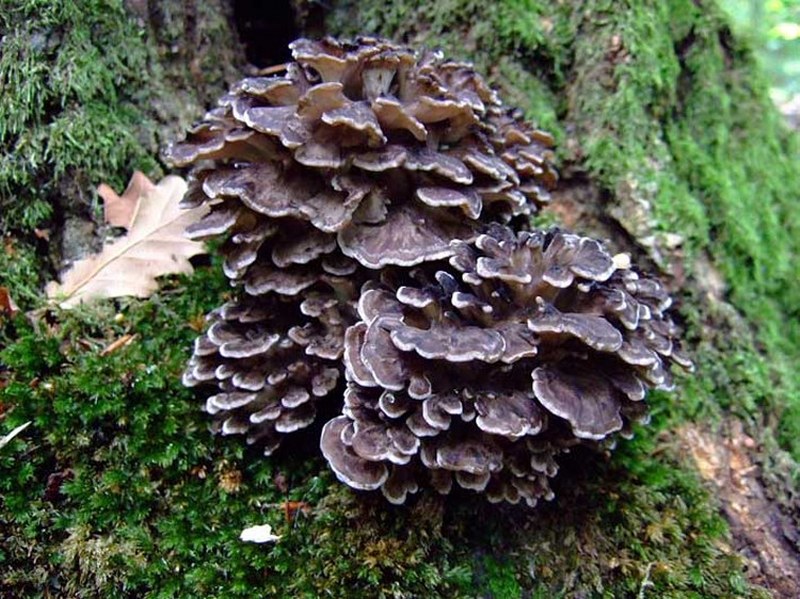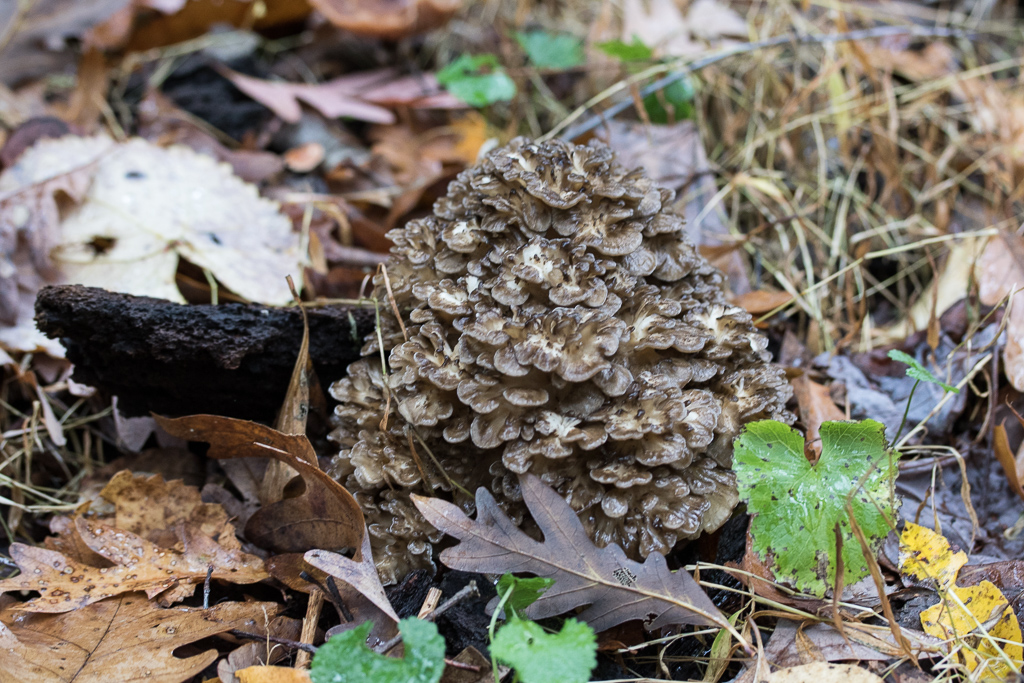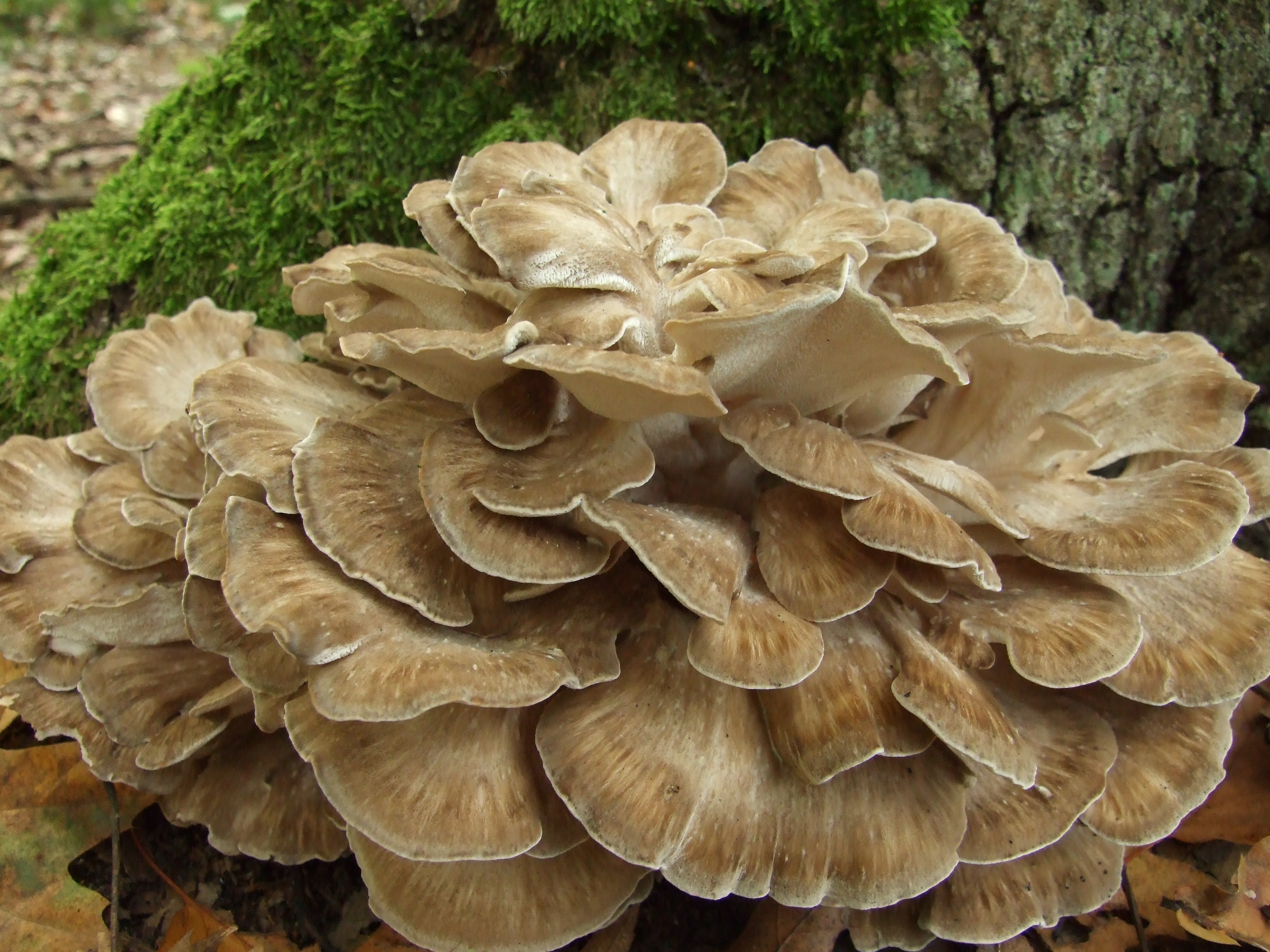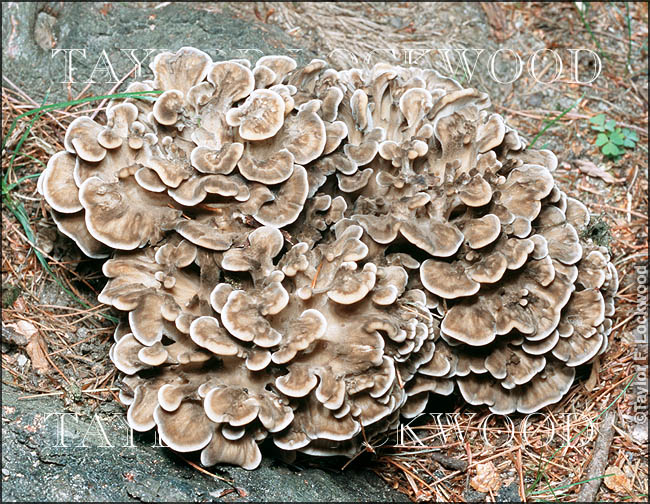
Grifola frondosa trsnatec lupenitý Mykoweb
Albino Grifola frondosa (Dicks.) Gray "maitake" mushrooms (described as G. albicans Imazeki and then placed in synonymy with G. frondosa) are particularly rare, and the few pertinent records.

Grifola frondosa Cos'è e come si cucina Festivaltnt.it
Grifola frondosa is a valuable edible fungus with high nutritional and medicinal values. The mating systems of fungi not only offer practical strategies for breeding, but also have far-reaching effects on genetic variability. Grifola frondosa has been considered as a sexual species with a tetrapolar mating system based on little experimental data. In the present study, one group of test.

(Grifola frondosa) stock photo. Image of complementary 15501422
Grifola is a genus of poroid wood-rotting fungi that produces compound, multipileate basidiomes that are edible. We analyzed the phylogenetic and taxonomic diversity of Grifola on the basis of phylogenetic analysis of internal transcripter space (ITS) and β-tubulin ( TUBB) DNA sequences, comparison of morphological features and host relationships.

grifolafrondosabyrichardjacob Western Pennsylvania Mushroom Club
Grifola frondosa (G. frondosa), generally known as hen-of-the-woods or maitake in Japanese and hui-shu-hua in Chinese, is an edible mushroom with both nutritional and medicinal properties.

Grifola frondosa DSCF0912 B.Kudlawiec Polskie Towarzystwo Mykologiczne
Grifola frondosa ( G. frondosa) is a basidiomycete polypore fungus. Currently, G. frondosa polysaccharides (GFPs) have attracted much attention due to their various physiological activities, including antioxidant, immunomodulatory, and antidiabetic activities, as well as their influence on gut microbiota 1, 2, 3, 4, 5, 6.

Grifola frondosa Koppelokääpä, Ruissalo. Kaksi isoa ryhmää… Flickr
Grifola frondosa ( G. frondosa) is a Basidiomycetes fungus that belongs to the family of Grifolaceae and the order of Polyporales. In Japan its edible fruiting body is known as maitake. In Japanese, mai means dance and take means mushroom. G. frondosa is known as "hui-shu-hua" (grey tree flower) in Chinese, possibly due to its appearance.

Grifola frondosa
As alluded to earlier, maitake has been used in eastern Asian medicine for many millennia, reported to have a wide number of health benefits. Grifola frondosa is an apt example of a well-documented traditional Chinese medicine. The first record of its use comes from Shen Nong Ben Cao Jing (Shen Nong's Scripture of Herbal Medicine [cited in Mizuno and Zhuang 1995]), which was compiled between.

Grifola frondosa un fungo dalle molteplici proprietà medicinali
Grifola frondosa mycelia concentration was measured by centrifuging the collected broth at 10,000×g for 10 min and freeze-drying the precipitated mycelia after three-time distilled water wash. Exo -polysaccharide concentration was weighted by mixing the resulting broth vigorously with four times volume of ethanol (100%, v/v), centrifuging to.

Maitake (Grifola frondosa) [OG1000GF] 25.00 OutGrow, Mushroom
Context:Griflola frondosa (Fr) S.F. Gray (Meripilaceae) (GF) is a medical mushroom, and its regulation of the immune system is of interest for the treatment of mood disorders. α-Amino-3-hydroxy-5-methyl-4-isoxazole-propionic acid (AMPA) receptors are the central mediator for the treatment of depression. Objective: This study examines the antidepressant effects of GF and the role of AMPA in.

Grifola frondosa Culture — Fungi Perfecti
Description: Grifola frondosa, a polypore, is a large cluster of grayish-brown fan or spoon shaped caps or fronds attached to a multi-branched, central stem. The stems of individual fronds are laterally attached. This mushroom grows in a rosette pattern, almost always at or near the base of an oak tree, but occasionally with other species of trees.

Grifola frondosa, Geastrum sessile, Geopora sumneriana
1 0 Grifola frondosa ( G. frondosa) is a Basidiomycetes fungus that belongs to the family of Grifolaceae and the order of Polyporales. Grifola frondosa maitake mushroom polysaccharide 1. Introduction In Japan Grifola frondosa ( G. frondosa) edible fruiting body is known as maitake. In Japanese, mai means dance and take means mushroom.

Grifola frondosa and its Antidiabetic activity
Grifola frondosa is a basidiomycete polypore fungus. Polysaccharides from G. frondosa (PGF) has recently attracted attention for its various physiological activities including antioxidant, antitumor, and anti-fatigue effects. In this study, hypoglycemic activity of PGF and its preventive effect against the progression of kidney fibrosis in Diabetic nephropathy (DN) rats were investigated.

Grifola Frondosa
Grifola frondosa (also known as hen-of-the-woods, maitake (舞茸, "dancing mushroom") in Japanese, ram's head or sheep's head) is a polypore mushroom that grows at the base of trees, particularly old growth oaks or maples. It is typically found in late summer to early autumn. It is native to China, Europe, and North America. [2] Description

Grifola frondosa
Summary 2 Grifola frondosa is a polypore mushroom that grows in clusters at the base of trees, particularly oaks. The mushroom is commonly known among English speakers as hen of the woods, hen-of-the-woods, ram's head and sheep's head.It is typically found in late summer to early autumn. In the United States' supplement market, as well as in Asian grocery stores, the mushroom is known by its.

Grifola frondosa (Klapperschwamm) Pilztag
Glycans and Glycosaminoglycans as Clinical Biomarkers and Therapeutics - Part B. Yanli He,. Hua Wang, in Progress in Molecular Biology and Translational Science, 2019. Abstract. Grifola frondosa, a polypore fungus that grows at the base of trees, is an edible and medicinal mushroom with a large fruiting body characterized by overlapping caps.Japanese scholars found that Grifola frondosa.

Grifola frondosa The Thing That is Steve
Results After eight weeks of GFPS intervention, all mice lost weight. Compared with the CC group, lactate dehydrogenase (LDH) and malondialdehyde (MDA) contents in CL, CM, and CH groups were increased, while Succinate dehydrogenase (SDH) and Superoxide Dismutase (SOD) contents in the liver were decreased.